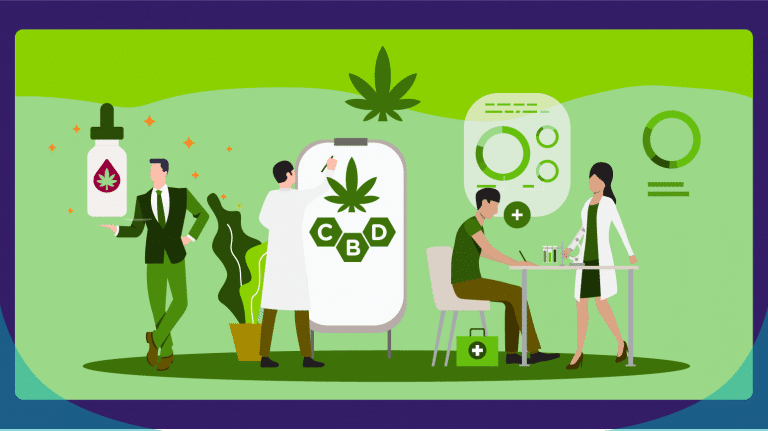31+ Schizophrenia Statistics to Keep in Mind

Schizophrenia is a severe, chronic mental illness characterized by disturbed perceptions and thoughts. Schizophrenia statistics show that this condition is not as common as other mental disorders. However, it is perhaps the most stigmatized as there are numerous myths and misconceptions about this mental disease. Some of them are the result of the representation of schizophrenics in pop culture; others are caused by outdated beliefs from the past.
In any case, the negative attitude towards schizophrenia prevents people from getting the right treatment and having equal job and social opportunities.
Therefore, let’s break the prejudice with proper knowledge!
10 Schizophrenia Statistics for 2022
- About 20 million people across the world suffer from schizophrenia.
- Schizophrenia is one of the leading causes of disability in the world.
- Around 0.4% of Americans are diagnosed with schizophrenia each year.
- About 50% of the mentally ill diagnosed adults in China suffer from schizophrenia.
- Taking high doses of CBD may reduce schizophrenic symptoms.
- 69% of schizophrenia patients do not get appropriate care.
- A higher IQ in schizophrenics increases the likelihood of attempted suicide.
- You have 10% higher chances of developing schizophrenia if your first-degree relative has it.
- Germany has the highest rates of schizophrenia cases.
- About 14.5% of schizophrenics completely recover.
Schizophrenia Statistics by Country
Which country has the highest prevalence of schizophrenia?
1. About 50% of the mentally ill diagnosed adults in China suffer from schizophrenia.
(BMC Family Practice)
China is a country that has the highest number of diagnosed cases of schizophrenia. Out of 16 million people who suffer from a certain mental disorder, 8 million are schizophrenics.
2. 1.1% of the adult population in India are diagnosed.
(Femina) (Schizophrenia)
India is the second country that has the most cases of schizophrenia per person. There are 4.3-8.7 million people that have been diagnosed with schizophrenia during their life.
3. Global schizophrenia statistics put Australia in fourth place.
(Ausmed) (The Sector) (Schizophrenia)
In other words, Australia is in fourth place by schizophrenia prevalence, after the US, with 1 in 100 Aussies affected by this brain disorder. That said, the stats also show us that 1 in 5 people have some type of mental disorder, i.e., 1 in 8 people suffer from anxiety issues and depression.
4. Around 1% of the population over 10 years old are schizophrenics, schizophrenia statistics in Canada report.
(Government of Canada)
50 per 100,000 Canadians are getting diagnosed with schizophrenia on a daily basis. Similar to other countries, the prevalence of this mental disease is more often seen in men (56%), compared to women (44%). Furthermore, people between 20 and 34 make three in ten new schizophrenia cases.
5. Germany has the highest rates of schizophrenia cases.
(Research and Markets)
The UK data shows England is the second country in Europe by the number of schizophrenia patients. In contrast, Spain has the lowest rates.
6. How high are schizophrenia statistics in the US? Approximately 1.5 million people experience the symptoms every year.
(SingleCare)
Moreover, these numbers are expected to increase in the near future. The state is often followed by another mental health disorder. For instance, depression symptoms occur in 30% to 54% of the patients.
Basic Schizophrenia Facts and Statistics
Here are some facts and general information you need to know about schizophrenia, including its types and phases.
7. There are five subtypes of schizophrenia.
(Psycom)
These include paranoid schizophrenia, catatonic schizophrenia, undifferentiated schizophrenia, residual schizophrenia, and disorganized schizophrenia. However, they are also said to overlap.
8. Vincent van Gogh is believed to have been schizophrenic.
(Online Psychology Degrees)
The incidence of schizophrenia is not unknown among artists. Some of the most famous people suffered from this mental disorder, like Syd Barrett (Pink Floyd), Peter Green (Fleetwood Mac), Brian Wilson (Beach Boys), and Jack Kerouac. and Vincent van Gogh.
9. Schizophrenia is one of the leading causes of disability in the world.
(National Institute of Mental Health) (UpToDate)
In addition, schizophrenia is ranked as one of the top 15 illnesses that contribute to the Global Burden of Disease by the WHO due to its significant financial costs.
10. Paranoid schizophrenia used to be the most common type of schizophrenia.
(Medical News Today)
After a long and careful analysis of paranoid schizophrenia statistics, it is determined that this is not a separate disorder, but rather a positive symptom. People who suffer from this condition experience an increasing sense of paranoia, which makes it difficult to lead normal lives.
12. Schizophrenia has “positive“ and “negative“ symptoms.
(WebMD)
“Positive“ symptoms include auditory and visual hallucinations (hearing voices, seeing things), delusions, disorganized speech, and troubles with focus and movement.
“Negative“ symptoms include lack of facial emotions, alogia (lack of words, repetition), anhedonia (lack of pleasure), apathy, and difficulties in executing everyday actions like showering or completing what they started.
11. Only 0.3% of the population suffers from schizoaffective disorder.
(Psycom.net)
This is a very rare chronic condition characterized by typical schizophrenia symptoms, such as hallucinations and delusions, and by symptoms of mood disorders, like mania and depression.
15. The acute or active stage is characterized by psychotic symptoms.
(MyMed.com)
This is the second stage. Psychosis is one of the symptoms of schizophrenia, but of other diseases, too.
13. Two or more core symptoms must persist for at least one month to officially diagnose the disease.
(Cleveland Clinic)
One of the basic facts about schizophrenia is that it is usually diagnosed after all other conditions are ruled out through MRI and CT scans, psychiatric consultations, and blood and urine tests.
14. There are 3 phases of schizophrenia.
(MyMed.com)
The first, prodromal stage, takes place a year before any acute symptoms appear. During this stage, people tend to isolate themselves from friends and family and also suffer from sleep disturbances, irritability, and suspiciousness.
16.Taking high doses of CBD may reduce schizophrenic symptoms.
(Psychiatric Times)
Interesting facts about schizophrenia and cannabis point out the link between marijuana and schizophrenia. Research shows that the use of cannabis is particularly beneficial at this stage due to the antipsychotic effect of CBD.
17. A shift from negative into positive symptoms of schizophrenia happens in the residual stage.
(MyMed.com)
This is the third, final stage. Symptoms in the recovery phase include lack of energy and interest, lack of initiative and drive, and overall withdrawal from society. There are usually no signs of psychosis in this stage, although some other symptoms such as paranoia and disorganized behavior or speech still remain.
Who Is Most Affected by Schizophrenia?
Is schizophrenia hereditary? What causes this mental disorder and what are the prevalence and recovery rates?
18. You have 10% higher chances of developing schizophrenia if your first-degree relative has it.
(WebMD)
Studies show that one of the most common causes of schizophrenia is genetics. Actually, your chances of having it increase by 10% if a family member has been affected by this condition. If both of your parents had schizophrenia, you are 40% more likely to develop symptoms. Other causes include brain chemistry and environmental factors.
19. Schizophrenia statistics report a higher IQ in schizophrenics increases the likelihood of attempted suicide.
(WebMD)
Being male, under thirty, unmarried, and fully aware of the diagnosis are typical features of schizophrenics who try to commit suicide. Other factors that contribute to a rising rate of suicidal thoughts among people with this mental illness include feelings of hopelessness and social isolation, as well as other health and mood disorders.
20. Getting diagnosed after turning 40 is extremely rare.
(WebMD)
Likewise, getting diagnosed before 12 years old is uncommon.
Although schizophrenia is registered equally among men and women, most males develop symptoms between 18 and 25 years of age. The majority of women, however, are diagnosed with schizophrenia in their late 20s and early 30s.
Statistics About Schizophrenia Treatment
What about the treatment? How many people get the right medication and therapy?
21. 69% of schizophrenia patients do not get appropriate care.
(Verywell Mind)
It is estimated that 69% of people across the world living with this disorder don’t receive suitable treatment due to various reasons, the most common being lack of available healthcare. In fact, 90% of untreated schizophrenics are shown to reside in low and medium-income countries, where they do not have access to quality mental health services, according to schizophrenia statistics worldwide.
22. The most commonly prescribed medications for schizophrenia are antipsychotic drugs.
(Mayo Clinic)
Given the right treatment, schizophrenia can be a manageable condition. However, owing to the many side effects of traditional medication, it is crucial that the right kind of therapy is administered.
23. People diagnosed with schizophrenia are 20 times more likely to commit suicide than healthy individuals.
(CAMH)
Schizophrenia statistics suggest that 1.71% of people that suffer from schizophrenia will end their own life. That’s 171 in 100,000 people.
25. CBD oil has potential benefits and side effects when used for the treatment of schizophrenia.
(DailyCBD)
Is using CBD for schizophrenia safe? Yes and no. Even though CBD can help reduce symptoms of depression and anxiety, when it comes to schizophrenia, there are many factors you need to consider.
First of all, THC is not recommended for people who suffer from psychosis (avoid full spectrum CBD products), secondly, there can be side effects when mixing CBD and medications, and lastly, CBD can’t cure schizophrenia, it can only sometimes help with its treatment.
26. Fun facts about schizophrenia and CBD suggest a single dose of cannabidiol could be the best alternative to antipsychotic drugs.
(Healthline) (WebMD)
One study revealed that patients treated with CBD exhibited fewer psychiatric symptoms than the placebo groups. This shows that the connection between marijuana use and schizophrenia is a beneficial one with positive results on people affected by this mental disorder. Furthermore, the participants in the study who used cannabis witnessed a significant improvement in their symptoms.
24. Adverse side effects during schizophrenia treatment are the third most common reason why schizophrenics stay off their meds.
(WebMD)
The antipsychotic drugs prescribed as a traditional treatment for the disease are some of the hardest medication to take. As a result, many patients stop using them, thus causing the symptoms to reappear.
The first two reasons include the inability to come to terms with the diagnosis.
5 Schizophrenia Facts and Myths
There are many misconceptions about this mental disease that need to be debunked. Here are some of the most common to clear the air.
27. 64% of US adults believe that schizophrenics have split personalities.
(WebMD)
Among the many misconceptions about this condition is that people with schizophrenia act as if they were two different people. In fact, what schizophrenia patients suffer from are delusions and disturbed perception of reality.
28. Schizophrenia and violence statistics reveal people with major mental health illnesses have 2.5 higher chances of enduring violence.
(Global News) (Canadian Mental Health Association)
Unlike the common belief and the representation on social media, schizophrenics are more likely to be the victims of a crime (due to their mental condition and stigmatization), rather than committing one,
29. Stigma still surrounds schizophrenia.
(Science Direct) (Daily Bruin)
How common is schizophrenia today? We already mentioned that “only“ 1.1% of people worldwide suffer from this illness, but hardly anyone speaks about it. Furthermore, this serious psychiatric disorder is the most stigmatized mental disease today. This happens due to many stereotypes and misinterpretations in the media (especially movies), and overall shame over mental illnesses.
30. A common myth: people with schizophrenia can’t stay on a job.
(Psycom.net)
However, judging by stats on schizophrenia from the National Alliance on Mental Illness, 50% of US adults diagnosed with this mental health issue can improve their condition and be productive members of society. What is more, work helps their condition.
31. There is no cure for schizophrenia.
(WebMD) (Your Health in Mind)
Although many facts about the disease tell us this is not an easily treatable disease, recovery is not impossible. Along with the prescribed medications, there are various types of psychological therapies that can help. The most common are cognitive behavioral therapy (CBT), cognitive remediation, psychoeducation, psychotherapy (talk therapy), and electroconvulsive therapy (ETC).
Final Thoughts
Schizophrenia is a serious brain disorder in which a person loses touch with reality. According to schizophrenia facts, symptoms vary both in type and severity. Nevertheless, they can still impair a person’s ability to fit into society, have a job, and a normal lifestyle.
Sadly, people affected by this mental health disorder need lifelong treatment and are constantly stigmatized because of their condition.
But, there is some good news. Effective alternative treatment could exist in the form of CBD oil and improve many of the symptoms resulting from this mental illness.
FAQs
What percent of the population has schizophrenia?
About 1.1% of people across the world suffer from schizophrenia. This translates to about 20 million of the global population. Even though prevalence rates are not as high as other mental disorders, this is still a severe and disabling illness.
What percentage of schizophrenics recover?
The average recovery rate is 13%–16%.
What’s more, the rates are lower in high-income countries (12%-13%), compared to low-income countries that have higher recovery rate (36.4%). The annual rate is about 1.4%.
Hopefully, with more research on CBD and cannabis in general, schizophrenia statistics on prevalence could maybe become lower in the future.






Excellent article about mental illness and the iffy treatment s offered based in income, etc. Newer medications do help with fewer side effects but can’t erase the stigma associated with such diseases. I worked in mental health for a very long time and was appalled at some of the disheartening beliefs people had. I will give only one, some of my clients came to me believing they weren’t able to vote. The source of that lie was hospital staff. After making sure that they wanted to be able to vote, we took a trip down to the sec of state and took care of business. Then celebrated with a cup of coffee.
Dear Alison,
Thank you very much for the comment! It certainly helps in breaking down the stigma and shines a light on the challenges people with schizophrenia are dealing with. Your act of support is really inspiring.